The following informative and interesting article as well as the photos were contributed by Katie Bartosik, Upper Dublin athletic trainer.
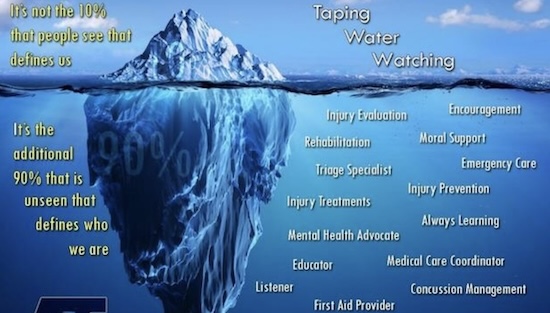
By Katie Bartosik, Med,ATC
Head Athletic Trainer, Upper Dublin High School
During the month of March, as the Winter season comes to its conclusion and a new season of Spring sports evolves, a special group of people are recognized. You see us – standing on the sidelines or sitting on the end of the bench with our teams. You see us bandaging up a bloody elbow, taping an ankle, stretching an athlete’s hamstring during warm-ups, or a calf muscle that has cramped during a game, and you definitely see us driving around on golf carts.
Then you pay attention to us. When we run out to the field or court to an injured athlete. Kneeling down as close to our athlete as possible, usually with a hand on their shoulder or back, a gentle sign of reassurance that we are there. And that we will help you through it.
Yes, you see us, but do you really know us? Or really understand what we do?
Who are we? We are Certified Athletic Trainers, or “ATs”. We work in all kinds of settings with not just athletes, but the physically active. We are healthcare personified, providing a unique service most of which is done behind the scenes. And just like our athletes know how to perform, when an injury happens and you see us run out to our athlete, the spotlight is on and it becomes our time to perform.
You usually find us in school settings, working with our athletes who we affectionately call “Our Kids.” You can also find us conducting Injury Prevention strategies with employees in the industrial setting such as Amazon and UPS. We are working with all branches of the Armed Forces to evaluate and treat injuries sustained during training exercises, as well as implement prevention and recovery strategies in order to help our troops be at their best. You can even find us behind the curtain Stage Left working the world of the performing arts because these people are “athletes” too. Everyone – from the elite marathoner to the “Weekend Warrior” can benefit from having an Athletic Trainer working along with them.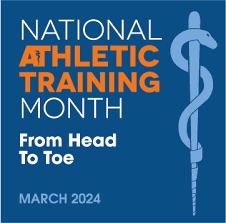
March is National Athletic Training Month (NATM). I bet a lot of you didn’t even know that was a thing, but it is! If you do a general search, you’ll find many resources available to learn about who ATs are, the education involved, and the skills in which ATs are trained and perform on a daily basis. There’s a theme that goes along with NATM and past themes have been – “ATs are Healthcare,” “We Prepare; You Perform” and “There’s an AT For That.” This year’s theme is: “From Head to Toe.” If you dig a little deeper into this theme, you’ll discover that it doesn’t simply allude to the physicality aspect. Injuries aren’t just physical. There also lies the emotional and mental aspects that the athlete has to work through as part of their road to recovery, whether it’s spraining an ankle for the first time or tearing an ACL. All athletes react and respond differently to different injuries they sustain. ATs are there to help their athlete through it all, and so the “Head to Toe” theme is very fitting in that it demonstrates just that – the all-encompassing aspects of injury.
As we continue to celebrate NATM during the month of March, I’d like to highlight some of my amazing colleagues from some of the schools in the SOL that I’ve come to know and grow with throughout my 19 years working at Upper Dublin High School.
MISCONCEPTIONS
There are a lot of misconceptions associated with being an AT. The most common is that people tend to confuse our profession with Personal Trainers. Then there’s the optical illusion that if you only see us standing on the sideline or sitting in our carts watching practices and games, it means we’re not really working. Believe us when we say that we’d rather just be able to watch games as a spectator and cheer on our athletes. That usually means it was an injury-free day which is an ideal day, but obviously rarely happens.
“We do more than provide water and tape ankles,” says Mike Horan from Council Rock North. Both he and Shan Barrett from Pennsbury High School say, “There’s a lot of education and specialized training involved in what we do.” AJ Clegg is the AT at Plymouth Whitemarsh High School. She gives an excellent answer to the “What exactly do you do?” question. “Athletic Trainers are professionals that assess injuries, rehab injuries, give preventative care, lend an ear to athletes when they are struggling (and at times, coaches as well), monitor weather for unsafe/unhealthy parameters, along with other various nuances of care. We are professionals that are always looking out for what is best for the student-athlete’s health and well-being. There isn’t another profession that spans all those actions.”
Bill Schmidt, Abington High School’s AT explains that “The more appropriate name should be ‘Athletic Therapist.’ A ‘trainer’ is someone who trains athletes in fitness and strength and conditioning. When you are learning to become an AT, that is only one part of the many areas of knowledge that our degree/certification covers. Then you have the daily, day-to-day adjustments and adaptations that you have to make for the athletes too.” ATs have to be creative in their work at times and ready to switch gears at any moment. Schmidt says, “We’re like Marine's – ‘adapt and overcome.’”
Years ago, an official approached me once and said, “You didn’t do much today, did you?” to which I politely responded, “That’s because you didn’t see all the prep work and athlete treatment I did in my office before coming out to the game. But also, which one of these athletes did you want to see break their ankle, or suffer a concussion today?” He nodded his head and then shook my hand and thanked me for being there. Since then, I’ve had the pleasure of having a nice chat with him whenever he comes to officiate, and I’ve even taped his ankles once or twice. Attention athletes: ATs don’t just stand around wanting injuries to happen. We just want to be there for you when they do.
Another misconception we experience is that athletes think that all we do is say “No,” meaning that if they come to us for some kind of ailment, we will immediately shut them down from playing. That’s not always true and we try to educate our athletes and guide them away from that negative way of thinking. Let’s keep it positive, people! Athletic Trainers are here to HELP you! It’s true, sometimes we are the bearers of bad news in that we have to pull you from your sport because of your injury, but we try to educate and communicate with our athletes to look at it from the other side of the coin. Athletic Trainers also say “YES!!” and tell you that you CAN still play and that you are GOOD to continue on. That’s why we can get frustrated when our athletes wait 4 or 5 days before seeing us because by then the injury has become worse, and instead of missing one day of sport, you’re now out for one week.
We have to bring our kids back to reality sometimes and remind them that they are teenagers and have teenage bodies. I think they’re used to watching so many elite, D-1 collegiate and professional athletes and think they’re like them. When they see Aaron Rodgers running around looking like he could make a comeback to the NFL after only three-and-a-half months removed from a torn Achilles, they think they can do that too. Our athletes think the injuries they sustain are just minor nuisances and thus continue to play through them. But what they don’t think about is the long-term effects of playing while injured. This is when ATs step up and do the part of the job that they really don’t like to do, but is at times, necessary. That is the saying “No” part of the job. Schmidt says - someone needs to say “No” when an athlete is in danger of getting an injury that can affect them for the rest of their lives.
WHY BECOME AN AT?
So why do we do what we do? What led us to this profession and job setting at the High School level? Here, we spend most of our time with teenagers and treating them in ways that most people find disgusting – such as giving them water after they vomit on the field (or accidentally on us), evaluating toe injuries and taping up feet, and wiping away blood, sweat, and tears. It’s definitely a labor of love for sure – and a passion that’s hard to describe.
Most ATs were athletes themselves, and they discovered an interest in the profession after suffering an injury during their sport. Some ATs are simply sports fans, they like science and anatomy, the intrigue of what happens to the body during an injury, and the main factor - helping people.
“I enjoyed playing and watching sports and was interested in medicine,” says Barrett. “This career is a way to stay close to the games and help athletes.” Clegg says, “I wanted to work with injuries, but also with people who are motivated to get better.” Wissahickon’s Pete Rooney’s reason for becoming an AT? “I like sports and I was interested in medicine. I did not think I would be a good Doctor, especially a surgeon. One day I saw my high school AT treating a dislocated finger and I thought that would be one profession I could get into.” And Mike Horan, “liked the variety of emergency medicine and rehabilitation.”
If you’re fortunate to be at your school for a long period of time as my colleagues here, the job starts to become more of a way to continue to build relationships with not just the Athletic community but the school and District community as a whole. Scott Lisher, now the Athletic Director for CB East, was the AT for Council Rock South for 21 years before moving to the role of AD. “What I enjoyed most about my time at CR South was being able to forge such good relationships with the students and families in the community. Being able to see students grow from middle school, through high school and in some cases seeing former students’ kids come through, is something special. I had the honor to work with and help hundreds of student athletes with injuries, performance, academics and just life issues. Being able to play such an important role in students’ lives, in a variety of ways, is one of the most enjoyable things about my time at CRS. Being an athletic trainer at the high school level is so much more than just taking care of an injury or concussion.”
Schmidt concludes, “As my predecessor and mentor Dick Koch (former AT for Abington) used to say, ‘This is the greatest job, Billy.’ There is no better feeling helping out a person who has had a serious injury and getting them back to play.’” I think I speak for all of my colleagues when I say I couldn’t agree more.
PROS, CONS, & WORK-LIFE BALANCE
You can make a list of Pros and Cons regarding any profession and Athletic Training is no different, especially because it isn’t your “run of the mill” 9 to 5 job. The hours itself can be both a pro and a con, depending on what’s on the schedule and the circumstances of the day. Barrett explains, “It’s not a 9 to 5, 40-hour work week. Some days I’m working 12 hours. But some days I’m working 2 or 3.” One of the “Pros” on Clegg’s list is “Getting to know so many great student-athletes over the years. I enjoy seeing them achieve in high school and for some that stay in touch, the things they achieve down the road. Recently, I had a former athlete contact me to say she just passed her certification exam to become a Physician Assistant and had a job lined up. It 100 percent made my day!” Horan enjoys the variety that comes with the job of an AT, “You get day to day variety and you’re not always sitting behind a desk.” He continues, “You also get to see kids develop over their time here.”
Pete Rooney enjoys “Playing a big part of the Athletics Program. ATs can develop a strong relationship with the community and especially have a positive influence and relationships with student athletes and their families.”
Coupled with the list of Pros and Cons that ATs will give you, is the very important topic of maintaining that “Work-Life” Balance. Athletic Training in the High School setting means you’re working afternoons and evenings. Your social life can take a bit of a hit in that you can’t meet up with your friends after work because your “after work” time isn’t until 8pm. Some might say to us that we work “weird” hours or we work all the time. It can feel that way at times, but it’s important to keep our jobs in perspective and have that work/life balance that everyone in any job deserves. Horan says, “You have to advocate for yourself to keep hours reasonable and that can be a constant effort. But it has become easier over the past couple of years in that administrators also understand that work-life balance is important.” Even after doing this job for a long time and having a routine in place during each sports season of the year, finding that work-life balance can still be a bit of a challenge, especially when you have a family of your own and live outside of the School District in which you work. Clegg is in her 22nd year at PW and she says “I’m still working on that.” Pete Rooney concurs as “It can be really difficult to balance both work and life in this profession when you have a family. When there are no games on the weekends, my time is spent exclusively with my family. I do not work in the summer so my time then can also be spent with family. During the school year I try to attend every event my own children are participating in (musicals, concerts, games…etc.).”
There are also times when ATs feel it is time for a change and perhaps a different challenge. “I began as the 9th grade league administrative representative and that began my involvement in the administrative side of Athletics,” explains Scott Lisher. “Having great mentors in John Nodecker, Buff Radick and Scott Layer, they allowed me to assist them and learn the intricacies of the Athletic Director position. I developed an interest and appreciation for the administrative side of high school athletics. With that said, I felt that a change in role was needed for me to give me a fresh start and new role in helping student athletes and coaches. It's a challenging role, one that I had found a passion for.”
SCHOOLS EMPLOYING ATs
It’s a very fortunate thing to have a full-time AT in a High School, but not all schools employ one. What’s the importance? There’s a simple answer: Continuity. Shan Barrett shares the belief, as do we all, that “having someone there daily versus having someone there just for event coverage provides a more consistent model of care.” When asked why all High Schools should employ ATs, Mike Horan says, “There needs to be an advocate for the health and wellbeing of the student athletes. Having an allied health care professional trained in sports medicine is paramount.”
But it’s not just High Schools that should have ATs on the sidelines. Middle School sports continue to grow and these athletes need an advocate as well who specializes in sports injuries. Schmidt is adamant in his belief for full-time AT employment at schools. “Every school district should have a Senior High and a Junior High Athletic Trainer.” He says the obvious answer to “Why?” is, “Did you see the Buffalo Bills game when the AT saved Damar Hamlin’s life? Everyone who saw that or knows the story can relate to that.” We as ATs know the worst-case scenario is when an athlete collapses on the field. That is what we prepare for. Who’s physically there at that precise moment to handle that situation should it ever occur?
THAT’S A WRAP….pun intended!
There’s a poster that I have hung in my Athletic Training Room. I don’t know who the original creator of this poster is, but I need to give them credit for their depiction of what it is an Athletic Trainer does.
The majority of people only see the 10 percent of everything we do, but through education and continuing to promote our profession – not just in March! - we hope you come to see and understand the other 90 percent.
To our athletes, we say this -- outside of your parents and coaches, we are your biggest fans. We laugh with you and laugh because of you. We sometimes just look at you and shake our heads. Sometimes we have to yell at you, no differently than a Coach yelling at an athlete in order to try and get the best effort from them. We cheer with you and for you. And yes, we even cry with you and we cry for you. The worst part of our job is saying that you can’t play. But remember, the absolute best part of our job is telling you that you CAN!
So as March concludes and we continue on with our Spring sports season of the ‘23-24 school year and in the seasons of school years to come, we’ll continue to do what we do. For you- “OUR KIDS”. You’ll continue to see us - driving our golf carts, sporting our khakis, and rocking our fanny packs. Hopefully, now you’ll have a better understanding of all the things we do and who we are. And you’ll know that whether it’s behind the scenes or out on the field under that spotlight, we’ll continue to be there; and that we’ve got you – from head to toe!!
For more information about the Athletic Training Profession, you can visit www.boc.atc.org; www.nata.org; and www.atyourownrisk.org.
BILL SCHMIDT – ABINGTON
College/AT Program you attended: BS in Athletic Training & Physical Education from Temple University
How many years have you been an AT? 35 years total (7 at Upper Moreland, 6 at Springfield, and in my 21st at Abington)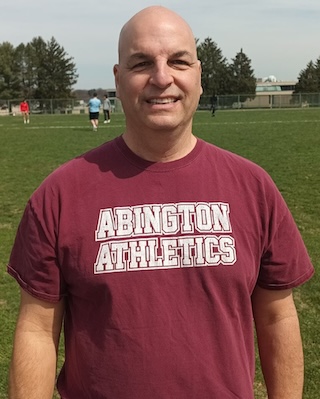
Favorite Professional Athlete: Craig Reynolds (Abington Grad playing for Detroit Lions).
Favorite food: No favorites - I like most foods.
Favorite thing about being an AT: Helping athletes overcome their injuries and the challenges that go along with that
Standout memory/moment at your school: I've worked at three schools and I have standout memories for each, but I guess the biggest is watching my two sons play sports at Abington HS.
If you had a song played for you every time you ran out to an injured athlete, what would that song be? “Even Flow” by Pearl Jam; “Ramble On” by Led Zeppelin; and/or “Monkey Man” by The Rolling Stones.
Do you have any “Pre-game” rituals? No
One piece of advice for your student-athletes: Do what you love
One piece of advice for students looking to become an AT: For me, being both a Teacher and Athletic Trainer has worked out. Athletic Training is the best job ever, but you have to find the part you like best and run with it.
SHAN BARRETT – PENNSBURY
College/AT Program you attended? West Chester University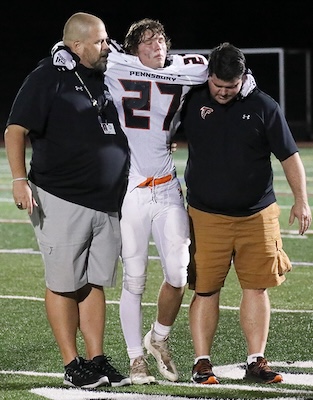
How many years as an AT? 27
How many years at your school? 22
Favorite Professional Athlete: Darryl Strawberry
Favorite Food: Pizza
Favorite Thing about being an AT: Watching my teams and players succeed
Standout memory/moment at your school: Fall 2023 - finally beating a rival in football for the first time in my tenure here.
Do you have any “Pre-Game” Rituals? I don’t know if this is a ritual, but I usually have a snack before I head out to a game
One piece of advice for your student-athletes: Make sure to hydrate well in advance of competing.
One piece of advice for students looking to become an AT? Be prepared for anything at any time. You never know how your day will go.
AJ CLEGG – PLYMOUTH WHITEMARSH HS
College/AT Program you attended: Boston University
How many years as an AT? 22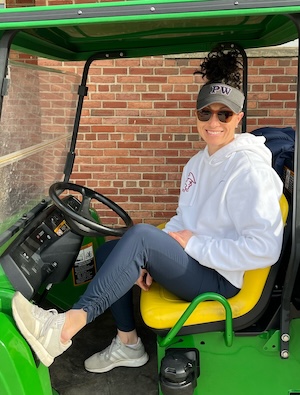
How many years at your school? 22
Favorite Professional Athlete: Kristi Yamaguchi
Favorite Food: I have to break this one down….drink: COFFEE, snack: CHOCOLATE, meal: maybe Eggplant Parm.
Favorite Thing about being an AT: Helping athletes return to the sport they enjoy playing.
Standout memory/moment at your school: I’d say there are two: 2010 Boys Basketball team winning States; and the 2022 Girls Basketball Team winning States.
Do you have any “Pre-Game” Rituals? No
One piece of advice for your student-athletes: Learn the difference between when to keep pushing and when to stop. Ignoring a possible injury will only make it worse and possibly have you miss more of the season vs. getting some help and possibly only missing a few practices.
One piece of advice for students looking to become an AT: Spend the time to learn about the profession and not just what you think it looks to be.
PETE ROONEY – WISSAHICKON (Moss Rehab)
College/AT Program you attended: B.S. in Kinesiology Temple University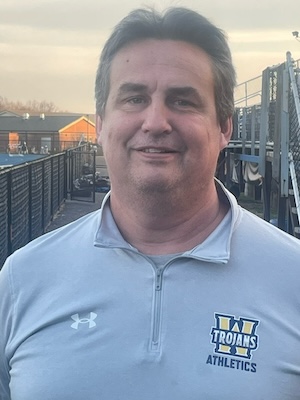
Teaching certification in Health and Physical Education from Temple University
M.ED Neumann University in Social Emotional Learning
How many years as an AT: 27 years at Wiss
Favorite Professional Athlete: Mike Schmidt
Favorite Food: Chicken Cheesesteak
Standout memory/moment at your school: Too many to pick just one
Do you have any “Pre-Game” Rituals? No
One piece of advice for your student-athletes: The term “student-athlete.” You are students first; athletes second.
One piece of advice for students looking to become an AT: Don’t pick going to a D-1 program just because it’s a D-1 program. Go to a college/university that best fits what your future goals are and best fits you.
MIKE HORAN – COUNCIL ROCK NORTH
College/AT Program you attended? York College of Pennsylvania Apprenticeship Program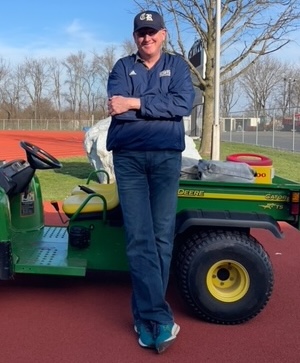
California University of Pennsylvania Masters of Science in Exercise Science and Health Promotion
How many years as an AT? 27
How many years at your school? 27
Favorite Professional Athlete: Carlos Ruiz
Favorite Food: Cheesesteak with fried onions
Favorite Thing about being an AT: Working with high school athletes
Standout memory/moment at your school: Winning state championships in girls and boys soccer
If you had a song played for you every time you ran out to an injured athlete, what would that song be: Bonnie Tyler “Holding Out for a Hero” or Mötley Crüe – “Dr. Feelgood”
Do you have any “Pre-Game” Rituals? For basketball I walk out into the hall for the National Anthem.
One piece of advice for your student-athletes: It's a game, play your hardest, but when the buzzer sounds, keep it in perspective.
One piece of advice for students looking to become an AT: Advocate for your work-life balance from the first day.
The Author: KATIE BARTOSIK – UPPER DUBLIN HS (NovaCare)
College/AT Program you attended: BS in Sports Science from Cabrini (College) University and West Chester Apprenticeship Program; MEd in Athletic Training from Temple University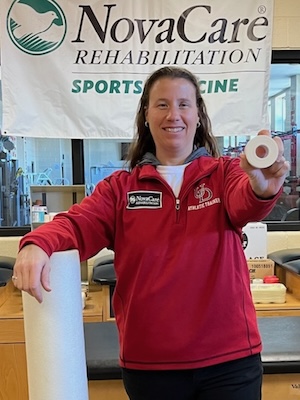
How many years as an AT? 21
How many years at your school? 19
Why did you want to be an AT? I love sports and I was looking to do something in the healthcare field to help people. My AT at Cabrini helped me with my injuries, and while working with her and getting to know more about what her job entailed, I decided this would be a really great career for me.
Favorite Professional Athlete: Emmitt Smith (yes, I’m a Cowboys fan!)
Favorite Food: Chicken Parm w/ Angel hair pasta
Favorite Thing about being an AT: Working with an athlete from onset of injury to the moment they can return to play
Standout memory/moment at your school: Obviously the big-time victories/championships which are great, but I also remember every athlete I had to spine board.
If you had a song played for you every time you ran out to an injured athlete, what would that song be? Either “Help!” by the Beatles or the first line on repeat of “Fire Burning” by Sean Kingston, lol #iykyk
Do you have any “Pre-Game” Rituals? I eat a bag of Peanut M&Ms before every football game
One piece of advice for your student-athletes: Don’t be afraid to be coached – from the coaches of your sport to your Athletic Trainer “coaching” you about your injuries/health. Compete and work hard, but stop putting so much pressure on yourselves. High School Athletics are some of the best times of your teenage lives. Enjoy playing the sport you love with your best friends and know that your AT has you!
One piece of advice for students looking to become an AT: Observe and talk to ATs in different job settings to get a better understanding of the profession and which setting meets your goals.
- Log in to post comments

